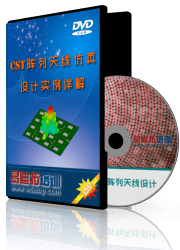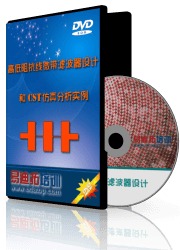- 易迪拓培训,专注于微波、射频、天线设计工程师的培养
CST2013: Boundary Conditions - Thermal
 Simulation: Settings
Simulation: Settings  Boundaries
Boundaries  Thermal Boundaries
Thermal Boundaries
Xmin, Ymin, Zmin, Xmax, Ymax, Zmax
Boundary conditions for thermal problems can be selected independently from those for electromagnetic problems. Currently three types of boundaries are available, which are comparable to electric, magnetic and open boundaries.
The table below shows which thermal boundaries are available and how temperature and heat flow are affected.
| Temperature (T) | Heat Flow (Q) |
| Description |
Isothermal | T = const. | Q tangential = 0 |
| Heat can pass this type of boundary, but the temperature is constant. In the boundary temperature page one can define a fixed or floating temperature value. |
Adiabatic | d T / dN = 0 | Q normal = 0 |
| No heat flow passes this boundary condition. The temperature distribution is not constant. |
Open | Lim R→∞(T) = T Background |
|
|
|
Open (add space lf) | Similar to the open boundary condition, with some extra space added between structure and applied boundary condition. |
|
|
|
Example:
|
|
The example above is a coaxial connector with a loss distribution from a hf-simulation. Usually adiabatic boundaries are applied when the structure is continued behind the boundary (e.g. when waveguide ports are used). If a device is embedded in a thermally controlled environment an isothermal boundary is advisable. For devices which operate more or less in a free surrounding the open boundary is likely the best choice.
Note: choosing the correct type of boundary is very important for a proper thermal simulation. Especially the temperature distribution is very sensitive to the boundary settings.
Open boundary...
Pressing this button opens the Settings for Open Boundaries dialog box, which offers the possibility to enter some settings regarding open boundaries. Consequently this button is only enabled if an open boundary condition is selected. The behavior of this boundary condition is very much related to the background temperature setting in the thermal solver dialog boxes (Thermal Stationary Solver / Thermal Transient Solver) .
CST微波工作室培训课程套装,专家讲解,视频教学,帮助您快速学习掌握CST设计应用
上一篇:CST2013: Asymptotic Solver Angle Sweep
下一篇:CST2013: Asymptotic Solver Defaults
CST涓枃瑙嗛鍩硅鏁欑▼ | More...
 最全面、最专业的CST微波工作室视频培训课程,可以帮助您从零开始,全面系统学习CST的设计应用【More..】
最全面、最专业的CST微波工作室视频培训课程,可以帮助您从零开始,全面系统学习CST的设计应用【More..】
频道总排行
- CST2013: Mesh Problem Handling
- CST2013: Field Source Overview
- CST2013: Discrete Port Overview
- CST2013: Sources and Boundary C
- CST2013: Multipin Port Overview
- CST2013: Farfield Overview
- CST2013: Waveguide Port
- CST2013: Frequency Domain Solver
- CST2013: Import ODB++ Files
- CST2013: Settings for Floquet B










